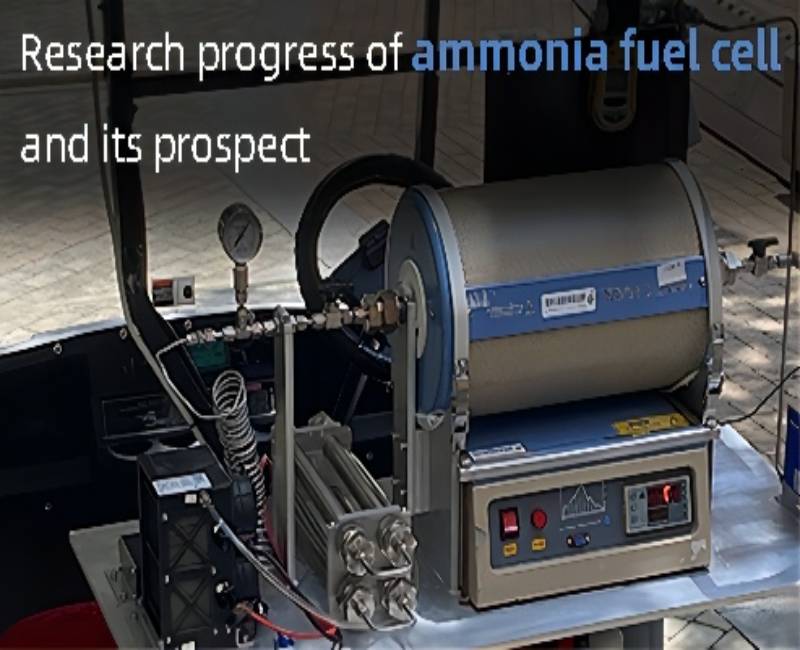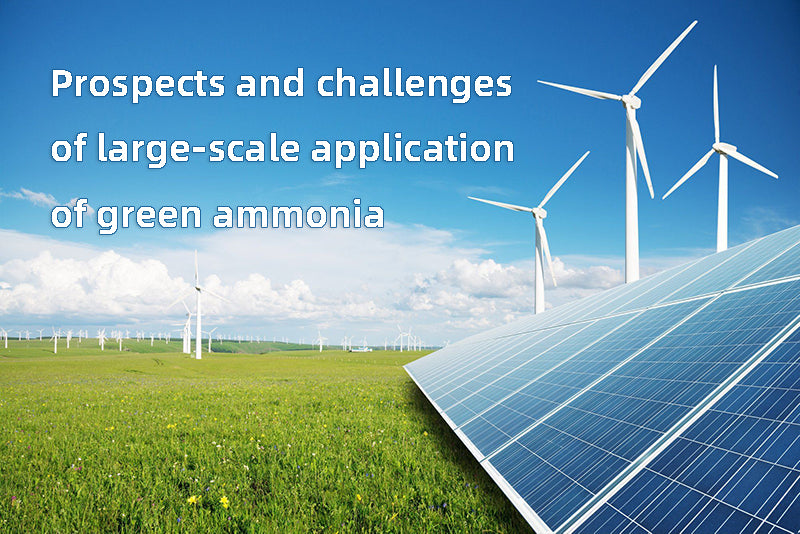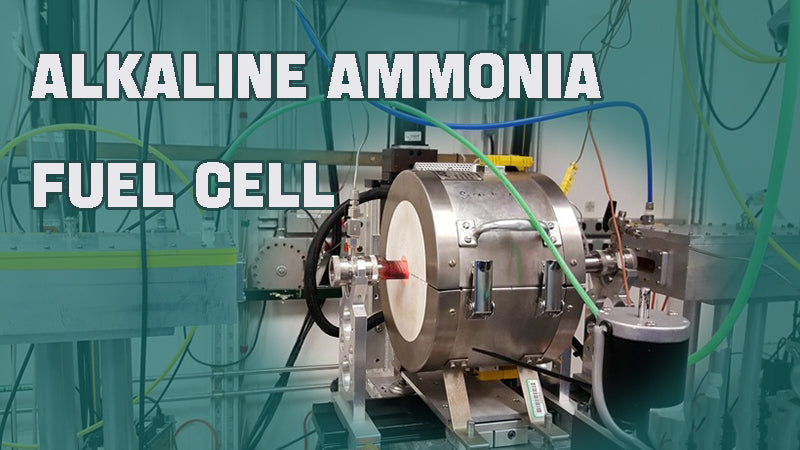
Main content:
- The source of green ammonia
- Prospects and challenges of application of green ammonia
- Application routes of ammonia energy
- Research progress of ammonia fuel cells
- Oxygen ion conducting electrolyte solid oxide ammonia fuel cell
- Proton-conducting electrolyte solid oxide ammonia fuel cell
- Proton membrane ammonia fuel cell
- Alkaline ammonia fuel cell
- Conclusion and outlook
Hydrogen is considered to be the most ideal clean energy, but problems such as high production cost, storage and transportation difficulties limit the large-scale energy application of hydrogen. As the carrier of hydrogen, green ammonia has attracted more and more attention from various countries.
Proton membrane ammonia fuel cells and alkaline ammonia fuel cell will not be able to meet the large-scale application of ammonia fuel in the short term, but alkaline battery is commonly used in people's daily life as well as lithium battery. Do you know the differences between lithium vs alkaline batteries? Alao, solid oxide fuel cells have high fuel flexibility and are the most promising type of ammonia fuel cell.
The source of green ammonia
According to the source of raw material hydrogen for ammonia synthesis, ammonia can be divided into brown ammonia, blue ammonia and green ammonia. Brown ammonia refers to ammonia obtained from hydrogen production from methane reforming (SMR), heavy fuel oil hydrogen production, coal production hydrogen and other processes to obtain raw material hydrogen. product.
Blue ammonia refers to ammonia products obtained from hydrogen by-products, SMR with carbon capture, electrification SMR, etc. Green ammonia refers to ammonia products obtained from hydrogen production by electrolysis, biomass hydrogen production with carbon capture, etc. Ammonia is classified as substantially zero carbon ammonia.

Prospects and challenges of application of green ammonia
The preparation of ammonia through the "green ammonia" route and the use of ammonia as the carrier of hydrogen has gradually been recognized by many countries. Spain announced plans in July 2020 to produce green ammonia and reduce its natural gas use by more than 10% in early 2021.
Orkney, Scotland, will build an ammonia plant producing 11 tonnes of green ammonia per day, providing the region with a scalable renewable energy storage solution that does not rely on grid transmission. In addition, Saudi Arabia announced a $5 billion investment in the construction of a 4 GW green ammonia plant, which will be operational by 2025 and is intended to supply green ammonia worldwide.
The large-scale application prospects of green ammonia are mainly determined by the production cost of green ammonia and the maturity of application technology. The production of hydrogen is a major component of the cost of ammonia production, and the Haber-Bosch process, although energy-intensive, has low net energy consumption.
Application routes of ammonia energy
Scientists have studied the combustion and emission characteristics of a compression-ignition engine with dual fuels of ammonia and diesel, and studies have shown that the overall conversion of ammonia is close to 100%. The results showed that the fuel blend with a hydrogen volume fraction of 10% performed best in terms of efficiency and power.

And compared to gasoline fuel, efficiency and power performance are improved due to the high compression ratio. Ammonia fuel has the potential to replace fossil fuels such as gasoline and diesel. The application of ammonia fuel to gas turbines, boilers, fuel cells, etc. is becoming a research hotspot in the world. However, there are few researches on ammonia fuel in China, and a small number of research institutes use ammonia as a fuel for internal combustion engines to study the characteristics.
Ammonia fuel can not only meet the high-power transportation needs of ships, but also has the characteristics of zero carbon emission. It has received great attention in the field of ship transportation. Industry leading enterprises have formed an alliance to jointly conduct research on the development of marine ammonia fuel and ammonia industry.
Famous companies including Mann Corporation, Shanghai Ship Research and Design Institute, Korea Shipbuilding and Ocean Engineering Corporation, Dalian Shipbuilding Industry Co., Ltd. and other well-known companies are actively conducting research on marine ammonia fuel. The field of ship transportation is one of the important application fields of ammonia fuel.
Due to the toxicity and strong pungent odor of ammonia, and the existing fuel filling system is very mature, it is difficult to install ammonia fuel filling system on a large scale, which greatly increases the use of ammonia fuel in conventional vehicles. application. Ammonia has good application prospects in ship transportation, power station boilers, industrial boilers and other fields. However, problems such as leakage, toxicity, corrosiveness, NOX generated by combustion, low mixing ratio and combustion system transformation and upgrading still need to be solved.
Research progress of ammonia fuel cells
Ammonia fuel cell is an important technology for ammonia energy, which can be classified according to different criteria. According to the different ways of supplying ammonia, it is divided into indirect ammonia fuel cell (IAFC) and direct ammonia fuel cell (DAFC).
Indirect ammonia fuel cells first decompose the fuel externally into nitrogen and hydrogen fuels through an external reformer. Hydrogen fuel cell is a kind of clean and promising battery and there are lots of companies have rich experience in it. You can read our article of top 10 hydorgen fuel cell companies in China to get more knowledge.
Ammonia in a direct ammonia fuel cell directly enters the fuel cell for power generation without external reformation. According to the electrolyte, ammonia fuel cells can be divided into oxygen anion conducting electrolyte solid oxide fuel cells (SOFC-O), proton conducting electrolyte solid oxide fuel cells (SOFC-H), proton exchange membrane fuel cells (PEMFC), alkaline membrane fuel cells (AMFC) etc. Among them, SOFC has a high degree of fuel flexibility and is the most commonly studied type of ammonia fuel cell.

Oxygen ion conducting electrolyte solid oxide ammonia fuel cell
The working principle of oxygen ion conducting electrolyte-based solid oxide ammonia fuel cell is based on the transport of oxygen anions in the electrolyte. Ammonia undergoes a two-step reaction at the anode. First, it is cracked to produce hydrogen, which is then oxidized by reacting with oxygen ions. At the cathode, oxygen or air is introduced into the cathode compartment and reduced at the cathode-electrolyte interface to oxygen anions, which pass through the electrolyte and react with hydrogen at the anode to form water.
The comparative study of ammonia fuel and hydrogen fuel is helpful to judge the feasibility of replacing hydrogen fuel with ammonia fuel. After research, it was found that with the increase of temperature, when the reaction temperature was higher than 600 °C, the electrical properties of SOFC-O of ammonia fuel and hydrogen fuel were gradually similar. A major challenge for ammonia solid oxide fuel cells is durability at higher operating pressures.
Proton-conducting electrolyte solid oxide ammonia fuel cell
In a solid oxide ammonia fuel cell (SOFC-H) based on a proton-conducting electrolyte, the ammonia fuel is decomposed to generate nitrogen and hydrogen. The hydrogen is converted to H+ in the presence of a catalyst, and the hydrogen ions are transferred to the cathode solid-electrolyte interface through the proton-conducting electrolyte.
The reaction forms water vapor. The produced water vapor and unreacted oxygen leave the fuel cell from the cathode side outlet of the fuel cell. At the anode side outlet of the fuel cell, unreacted ammonia, nitrogen and unreacted hydrogen leave the fuel cell.
Proton membrane ammonia fuel cell
The performance and durability of proton exchange membrane fuel cells are related to the quality of the fuel, but the deposition of impurities can still reduce the life and power output of the system. Although the proton membrane fuel cell using ammonia fuel can avoid the introduction of carbon oxides to cause fuel cell poisoning, in the presence of ammonia, NH4+ will occupy the charge sites, thereby reducing the overall proton conductivity, which in turn leads to a decline in system performance. Prolonged exposure can cause severe and irreversible poisoning.
The application of NH3 in proton membrane fuel cells avoids the harm of carbon-containing impurities such as CO and CO2, but NH3 pollution can also cause irreversible damage to the performance of proton membrane fuel cells. Therefore, adequate decomposition and purification techniques are required when using ammonia fuel, first in a cracker and then purified in a membrane to produce PEMFC-grade hydrogen to avoid cell poisoning and support material degradation.

Alkaline ammonia fuel cell
Compared with the proton membrane fuel cell, the alkaline fuel cell has a higher tolerance to ammonia, but the battery life, power density and fuel consumption still need to be further improved. At present, whether it is a commercial product on the market or a basic research level, alkaline membrane fuel cells are not a popular direction. Therefore, the development speed of ammonia alkaline membrane fuel cells will also be limited, and it is expected that large-scale applications will not be possible in the short term.Conclusion and outlook
The application of green ammonia as a carrier for hydrogen energy storage is expected to provide a decarbonization pathway for a series of products that depend on fossil fuels. The production cost of green ammonia and the maturity of energy application technology are the key factors restricting the large-scale energy application of green ammonia.
At this stage, the energy consumption and investment cost of green ammonia production are higher than those of the traditional Haber-Bosch ammonia production process, and the main advantage and significance lies in zero carbon. Therefore, the world's carbon reduction policy driver is an important driving force for the development of green ammonia. The technological breakthrough of green ammonia synthesis process will further promote the energy development of green ammonia.
In the future, combining synthetic ammonia with intermittent renewable energy such as solar energy and wind energy will become an important research direction of green ammonia technology. Ammonia fuel cell is an important means for the application of ammonia energy, but due to the limitation of technical characteristics, proton membrane ammonia fuel cell and alkaline ammonia fuel cell will not be able to meet the large-scale application of ammonia fuel in the short term.
Solid oxide fuel cells are the most promising type of ammonia fuel cell due to their high fuel flexibility. With the technical development of solid oxide hydrogen fuel cells and the promotion of market scale effect, the technical progress and cost reduction of solid oxide ammonia fuel cells will be further promoted, and the large-scale energy application of ammonia is expected to be realized.
Related article: battery high energy density, top 10 energy storage lithium battery companies, marine batteries near me
















